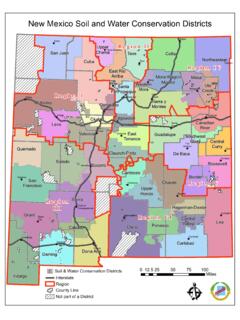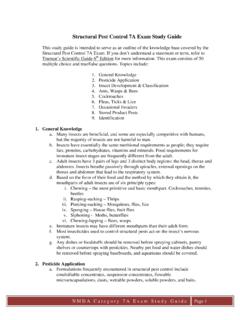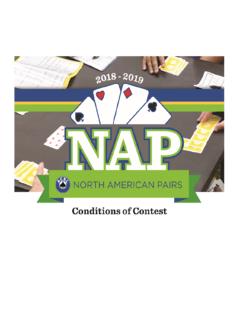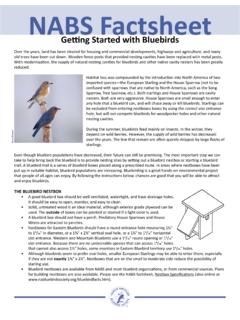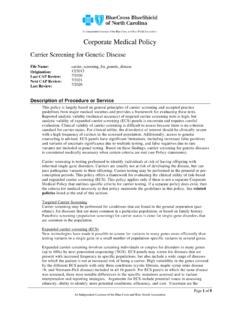Transcription of Structural Pest Control 7A Exam Study Guide
1 Structural Pest Control 7A Exam Study Guide This Study Guide is intended to serve as an outline of the knowledge base covered by the Structural Pest Control 7A Exam. If you don't understand a statement or term, refer to Truman's Scientific Guide 6th Edition for more information. This exam consists of 50. multiple choice and true/false questions. Topics include: 1. General Knowledge 2. Pesticide Application 3. Insect Development & Classification 4. Ants, Wasps & Bees 5. Cockroaches 6. Fleas, Ticks & Lice 7. Occasional Invaders 8. Stored Product Pests 9. Identification 1. General Knowledge a. Many insects are beneficial, and some are especially competitive with humans, but the majority of insects are not harmful to man.
2 B. Insects have essentially the same nutritional requirements as people; they require fats, proteins, carbohydrates, vitamins and minerals. Food requirements for immature insect stages are frequently different from the adult. c. Adult insects have 3 pairs of legs and 3 distinct body regions: the head, thorax and abdomen. Insects breathe passively through spiracles, external openings on the thorax and abdomen that lead to the respiratory system. d. Based on the form of their food and the method by which they obtain it, the mouthparts of adult insects are of six principle types: i. Chewing the most primitive and basic mouthpart.
3 Cockroaches, termites, beetles ii. Rasping-sucking Thrips iii. Piercing-sucking Mosquitoes, flies, lice iv. Sponging House flies, fruit flies v. Siphoning - Moths, butterflies vi. Chewing-lapping Bees, wasps e. Immature insects may have different mouthparts than their adult form. f. Most insecticides used to Control Structural pests act on the insect's nervous system. g. Any dishes or foodstuffs should be removed before spraying cabinets, pantry shelves or countertops with pesticides. Nearby pet food and water dishes should be removed before spraying baseboards, and aquariums should be covered. 2. Pesticide Application a.
4 Formulations frequently encountered in Structural pest Control include emulsifiable concentrates, suspension concentrates, flowable microencapsulations, dusts, wettable powders, soluble powders, and baits. NMDA Category 7A Exam Study Guide Page 1. b. Insect growth regulators that mimic juvenile hormones (juvenoids), such as those which are registered to Control cockroaches, are effective because they cause the adult cockroaches to fail to develop necessary sexual organs and therefore become incapable of reproducing. c. Stomach poisons must be swallowed to kill an insect. Ant and cockroach baits are examples of formulations that contain stomach poisons.
5 D. Contact pesticides cause death by penetrating the body wall. e. Dessicants kill by disrupting the protective coating of an insect's body wall, causing loss of body fluids. f. An insecticide that is applied to a surface where insects are expected to gather or walk is known as a residual insecticide. A contact insecticide must contact the outside of an insect's body directly while being sprayed. 3. Insect Development & Classification a. Arthropods are the largest group in the animal kingdom, making up almost 90%. of all known animal species. Arthropods include insects, spiders, mites, ticks, scorpions, centipedes, sowbugs, crabs, shrimps, lobsters, and many others.
6 B. Molting is the act of shedding the exoskeleton as an insect progresses from one developmental stage to the next. c. Most Structural insect pests undergo gradual metamorphosis or complete metamorphosis. The type of metamorphosis an insect undergoes is an important consideration when planning a pest management strategy. d. The distinct life stages in complete metamorphosis are the egg, larva, pupa, and adult. The final body structure of the adult is developed during the pupal stage in this type of development. Flies, beetles, ants, and mosquitoes are some insects that develop through complete metamorphosis.
7 E. In gradual metamorphosis, there are three distinct life stages: the egg, nymph, and adult. Cockroaches, termites and crickets develop through gradual metamorphosis. 4. Ants, Wasps & Bees a. Carpenter ants inhabit wood for nesting purposes; they do not use wood for food. b. Ants can be easily distinguished from termites by their thin-waisted appearance and elbowed antennae. Termites have a broad-waisted appearance and have straight antennae. c. Because the feeding habits of ants vary widely, precise identification of the species involved is often required for successful management. Because of their variable food preferences no universally effective ant bait has been developed.
8 D. There are about 30 species of ants that may be found in structures. Most species don't cause any damage, but are simply a nuisance to the homeowner. e. Mud daubers are a nonsocial or solitary wasp. f. Yellow jackets typically build their nests underground, so workers will come and go from the nest via an earthen tunnel that ends in a hole at the soil surface. g. Carpenter bees resemble large bumble bees but have very different nesting behaviors. They bore long tunnels into wood. NMDA Category 7A Exam Study Guide Page 2. h. The most effective means of controlling ants nesting indoors is to place baits as near as possible to all the nest areas.
9 5. Cockroaches a. A cockroach has wings but does not usually fly; exhibits gradual metamorphosis and nocturnal behavior; and prefers to live in protected cracks and crevices in homes. b. The ootheca or egg capsule of the German cockroach contains about 30-48 eggs. The ootheca of an American cockroach contains about 14-16 eggs. c. German cockroaches are the most economically important and most common pest of houses, apartments, restaurants, hotels, and other structures in the United States. It is usually the most persistent and difficult to manage. 6. Fleas, Ticks & Lice a. All lice are wingless parasites and spend virtually all their lives on their warm- blooded host.
10 B. First stage larvae ticks, called seed ticks, have only six legs. Nymphs and adults have eight legs. c. The most widely distributed tick in North America, a vector of Rocky Mountain Spotted Fever, is the Rocky Mountain wood tick. d. At normal room temperature, bed bug eggs will hatch in 6-17 days. However, there is considerable variation in the rate of bed bug development, even among individuals hatched on the same day and living under nearly identical conditions. 7. Occasional Invaders a. Occasional invaders are pests that often occur in buildings at some stage in their life cycle but do not usually complete their entire life cycle within the building.

